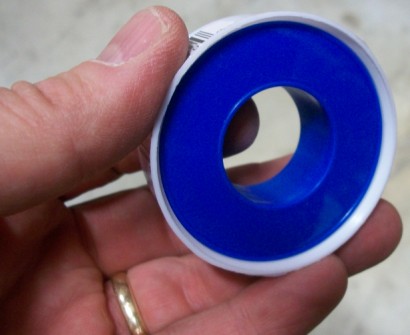
Winter’s frigid temperatures can take a toll on your home’s exposed pipes. During periods of extreme cold, these pipes can freeze up and burst, leading to costly water damage. You can reduce the risk of this happening by insulating exposed pipes to prevent them from freezing. Insulating these pipes also helps reduce heat loss and prevents them from sweating, which decreases the risk of moisture damage. This project doesn’t require expensive materials or a lot of time, but it’s important to make sure you do it correctly.
Materials
To insulate exposed pipes, you’ll need the following:
- Rag and mild cleaning solution
- Tape measure
- Fiberglass or foil insulation wrap or tubular pipe sleeves
- Duct tape
- Plastic (for fiberglass wrap)
- Gloves, pants and long sleeves (for protection if you’re using fiberglass wrap)
- Utility knife or box cutter
- Flashlight or head lamp (for crawl spaces)
Choosing a Material and Preparing the Pipes

- Determine which type of insulation to use. For most pipes, foil or fiberglass wrap is fine. For longer pipes, consider using tubular sleeves, which are typically sold in 6-foot lengths.
- Measure the pipes you’ll be covering in order to determine how much insulation material you’ll need to purchase.
- Purchase the insulation material. No matter which type you choose, look for material with a higher R-value, which will provide the pipes with better insulation.
- Clean the pipes. Before insulating the pipes, clean them thoroughly with a rag and cleaning solution. Removing grime and dirt from them helps the insulation material stick to the surface better. Wait for the pipes to dry completely before covering them with insulation wrap or a tubular pipe sleeve.
Covering the Pipes with Pipe Wrap Insulation
- Tape one end of the foil or fiberglass pipe wrap insulation to the end of the pipe, then wrap the insulating material around the pipe. Keep in mind that you should wear gloves, pants and long sleeves if you’re working with fiberglass.
- Overlap the insulation around the pipe by at least a half-inch. Make sure that the entire surface of the pipe is covered, especially at corners.
- If you’re using fiberglass wrap, cover it with plastic to prevent any condensation on the pipes from dripping.
Covering the Pipes with a Tubular Pipe Sleeve
- Measure the pipe, then cut the sleeve to the length you need. For corners, cut strips off the unused portion of the sleeve.
- Cut the sides of the sleeve, then wrap it around the pipe. Use duct tape to secure the sleeve to the pipe. Cover corners with the sleeve strips and wrap them securely with duct tape.
Tips
- Focus on covering exposed pipes that bring water in first, rather than drain pipes. Drain pipes usually don’t have a large enough amount of water in them to damage your property if they freeze and burst. You can still insulate them as a precaution, though.
- If you’re using more than one tubular sleeve to cover a long pipe, secure the seam between both sleeves with duct tape.
- Inspect the insulation each fall to ensure that it is still firmly attached to the pipes. You might need to reseal loose areas with duct tape.
- If you purchase insulation wrap or tubular pipe sleeves that are self-sealing, you should still use duct tape in a few areas to keep the insulation secure in case the self-adhesive stops working.
 (412) 364-9114
(412) 364-9114

